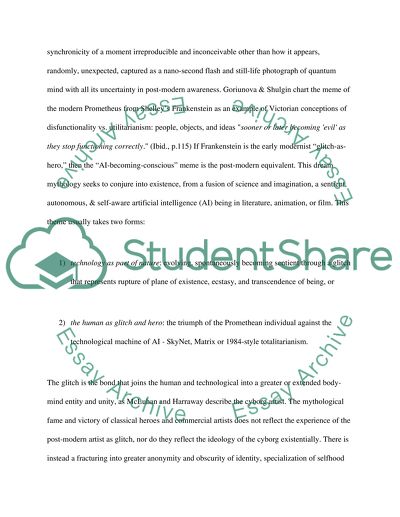Cite this document
(Digital Aesthetics Essay Example | Topics and Well Written Essays - 2000 words, n.d.)
Digital Aesthetics Essay Example | Topics and Well Written Essays - 2000 words. Retrieved from https://studentshare.org/design-technology/1574962-what-is-specific-about-digital-image-and-how-can-digital-aesthetics-be-described-through-a-reference-to-glitch-give-examples
Digital Aesthetics Essay Example | Topics and Well Written Essays - 2000 words. Retrieved from https://studentshare.org/design-technology/1574962-what-is-specific-about-digital-image-and-how-can-digital-aesthetics-be-described-through-a-reference-to-glitch-give-examples
(Digital Aesthetics Essay Example | Topics and Well Written Essays - 2000 Words)
Digital Aesthetics Essay Example | Topics and Well Written Essays - 2000 Words. https://studentshare.org/design-technology/1574962-what-is-specific-about-digital-image-and-how-can-digital-aesthetics-be-described-through-a-reference-to-glitch-give-examples.
Digital Aesthetics Essay Example | Topics and Well Written Essays - 2000 Words. https://studentshare.org/design-technology/1574962-what-is-specific-about-digital-image-and-how-can-digital-aesthetics-be-described-through-a-reference-to-glitch-give-examples.
“Digital Aesthetics Essay Example | Topics and Well Written Essays - 2000 Words”. https://studentshare.org/design-technology/1574962-what-is-specific-about-digital-image-and-how-can-digital-aesthetics-be-described-through-a-reference-to-glitch-give-examples.


